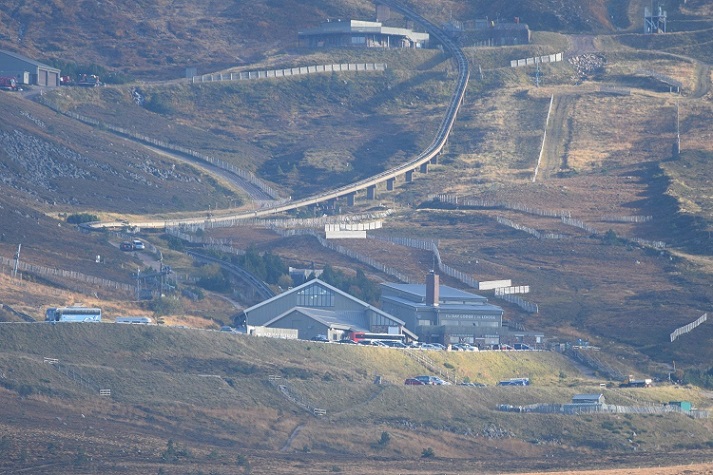
In the last three weeks two very significant pieces of information about the funicular railway have been made public and both raise serious questions about the proposed repairs.
The original plans for the construction of the funicular
Highland and Island Enterprise (HIE)’s £16m business case for repairing the funicular (see here) did not explain why 63 of the 94 viaduct piers needed propping up. HIE’s legal action to recover costs from the “design and build aspects of the original construction”, referred to by Audit Scotland in their report earlier this year and subsequently by the Scottish Parliament’s Audit and Scrutiny Committee, suggests that there could have been negligence by one of the parties involved. HIE have not revealed who they are trying to take to Court but the original plans for the funicular would be crucial for establishing any case. They were therefore requested, together with information about how the structure should have been monitored when complete, in an FOI dated 17th November 2020:
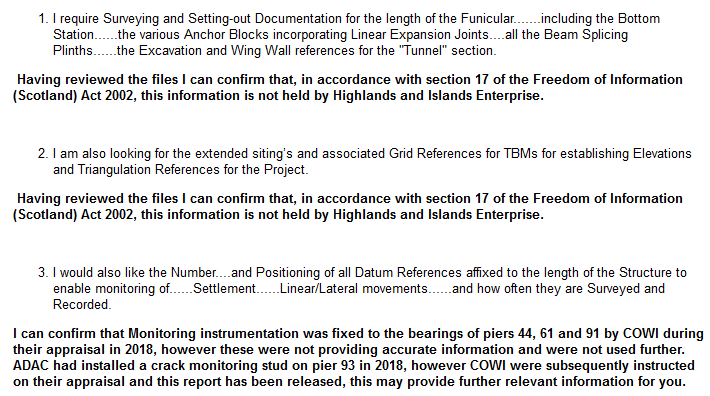
The responses to questions 1 and 2 indicate HIE has no copies of the original plans. How HIE can be proposing to sue anyone in court without copies of the original plans for reference is unclear, but it would seem without them they are unlikely to succeed. As far as I am aware this information should have been held for the lifetime of the funicular, as set out in the Construction, Design and Management Regulations 1994:
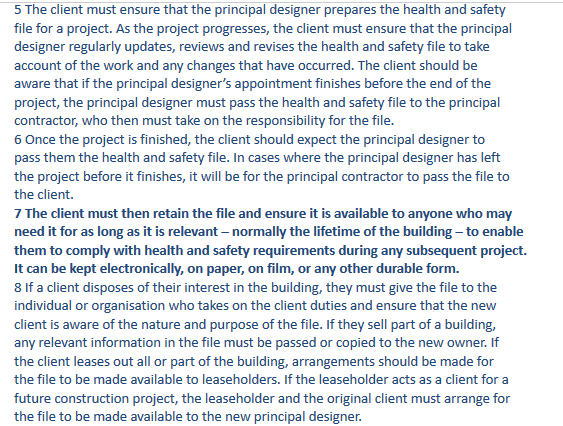
Paragraph 5 of the regulations indicates a Health and Safety file is a legal requirement. Time for another FOI but time too for the Scottish Parliament’s Audit and Post-Legislative Scrutiny Committee to ask what happened to the original construction documentation.
The response to Question 3 of the FOI, which suggests that HIE were not aware there should have been fixed monitoring points, may also explain why it took them so long to realise that the funicular pillars were shifting. As I understand this, a surveyor should have been using equipment to make sure that everything to do with the funicular was in alignment and to the correct heights, much as you would observe on an ordinary building site. Measurements would presumably have been taken from several points, I think these are known as bench marks, adjacent to the rail track and including every pier. This leads on to a further question, these measurements should presumably have been recorded and used in future examinations of the condition of the funicular. If that information had been available would the current problems have been noticed sooner?
It appears that as a consequence of these failures people using the railway may have been placed at risk for some time. Again, the Scottish Parliament should be asking questions.
The COWI Cairngorm funicular viaduct appraisal report
On Friday 11/12/2020, after several requests, HIE finally released the COWI report, all 311 pages (see here), into the condition of the funicular to the public who paid for it. This report, submitted to HIE back in December 2018, provides the basis for their decision to repair the funicular
It is quite a technical document, but with the help of the photos and a bit of common sense it is possible to get some understanding of what has gone wrong.
The report refers in several places to the original construction details not being available, e.g.
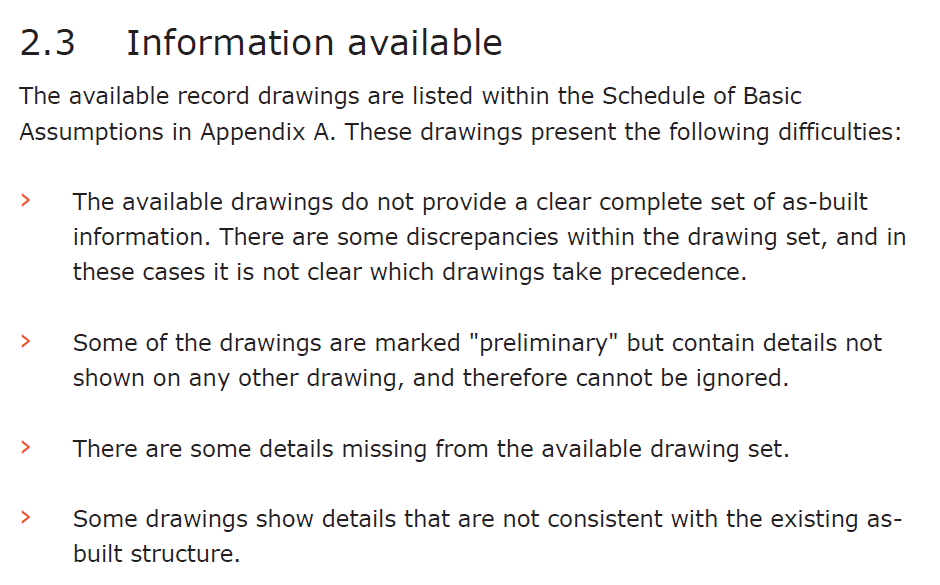
Balfour Beattie made a similar disclaimer about not having all the necessary information in the documents which formed part of the planning application to repair the funicular:

It appears that these two well-known and respected companies are covering themselves from possible future court action in the event of further problems.
Back on 18th November 2020 I submitted a couple of Freedom of Information requests to try and find out what had gone wrong but got nowhere (it’s clear now that that was because HIE did not have the original documentation):
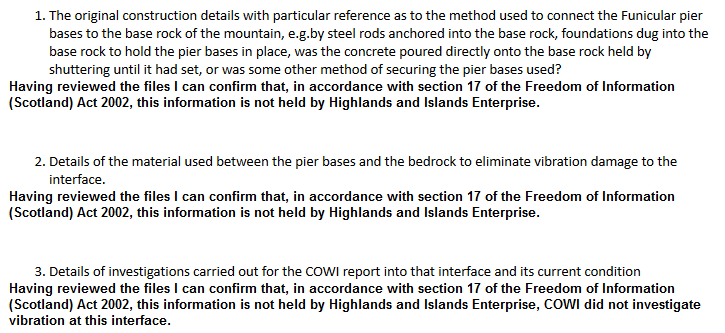
These questions have now, however, been partly answered in the COWI report:-
Q1. I am not a civil engineer, so had assumed that foundations would in some way be anchored to the bedrock. But COWI shows that is not the case, except possibly for a few pier bases and anchor blocks, as the bedrock is too deep, up to 5m under the ground. The next picture shows the foundations of a pier near the Shieling during the construction:
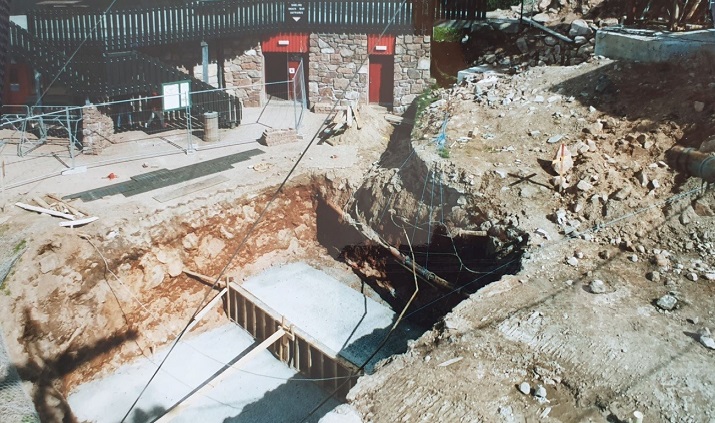
As you can see, the foundations are poured onto the mountain sand, gravel, boulder base material with two rafts being formed. The first larger raft is only about 200mm deep and is allowed to harden providing a base for the second pour which forms the base that the piers are connected to. This is known as a cold joint and is referred to in the report.
Q2. The material between the bed rock and the foundations is therefore the alluvial deposits from thousands of years of erosion of Cairn Gorm and is therefore well compacted so vibration from a train passing over would be negligible.
Q3. HIE’s response seems to have deliberately avoided answering the question I asked, which was about the condition of the interface between the pier bases and the bedrock, although I concede my question was a bit ambiguous. However, it does say that the COWI report did not examine the condition of the material under the foundations.
I will come back to this in my next post but the lack of such an investigation may explain why the COWI report does not attempt to explain WHY the funicular failed which in turn raises serious questions about how far the repairs will work and for how long.
Part 2 of this post will follow soon, which will be in a shorter period of time than it has taken HIE to release the COWI report!
Looking at the scale of ground preparations to put in each pillar confirms to me whatI have always believed about one aspect of this whole mess. A condition that applies if the funicular is closed permanantly os that it must be removed with a £30 – £50 million bill attached.But lookign at the scale and depth of groundworks for eadh pillar it seems clear that removing that lot would do more environmental damage than just leaving the foundations. So that bill must come down significantly and this should influece the any rational decision about what to do on Cairn Gorm
Drennann, if the Funicular is permanently closed it has to be removed, of that there is no question, but there is no time limit for that to happen. However, removal could be as easy as the removal of the Ciste chairs and was, as far as I can remember, recommended by Mr. K. Bryers to be upto 300mm below the surface.
Interesting comments.
The Oil&Gas business struggled with this issue when looking at rig removals and decommissioning. The engery required to remove the installations and infrastructure along with the further enviromental damage caused disturbing long established infrastructure all have to be considered.
This led to long arguments / discussions with the likes of Greenpeace who were adamant that everything should be removed. On the surface its black and white…but it’s not always…
Whilst the original Health & Safety File might not itself contain all the detailed design and construction drawings it might be expected to have some information concerning the design and construction. It would be interesting to make an FOI request to HIE asking them explicitly if they have a copy of the original Health and Safety file as the 1994 Act appears to make it a legal requirement that such a file was to be handed over to the then client and to be passed on to the new owner (HIE) when they took ownership of the funicular in 2008.
Your article, Graham, lays many questions at the door of HIE and its subsidiary CMSL. As usual, HIE will avoid answering. There are two obvious conclusions from this, either:
– HIE and CMSL are managing a cover up of what went wrong with the original design (or alternatively what was built) and what has not been done or delayed to monitor the performance of the funicular structure…..or,
– HIE and/or CMSL lack the competence to own and operate the Cairngorm funicular railway.
There may be other explanations, but these are the two most obvious.
To date, Audit Scotland has failed to get to the bottom of why this huge amount of public money is being spent to repair the funicular, with no chance of any return – including any questionable benefits to the local economy. The Scottish Parliament Audit Committee tried to get answers in its questioning of Audit Scotland, back in October, but the Committee failed to question HIE itself. That failure needs to be addressed, and promptly.